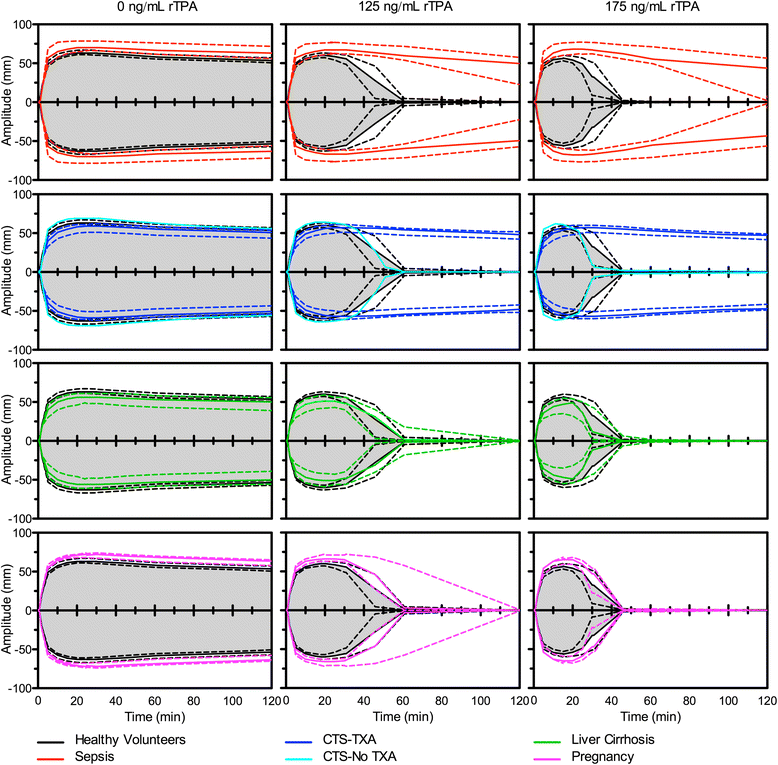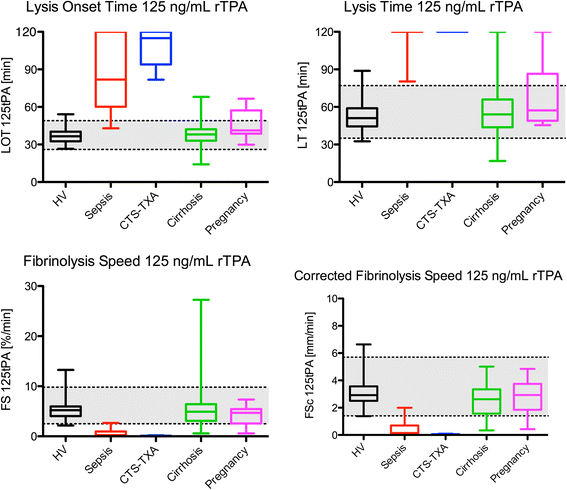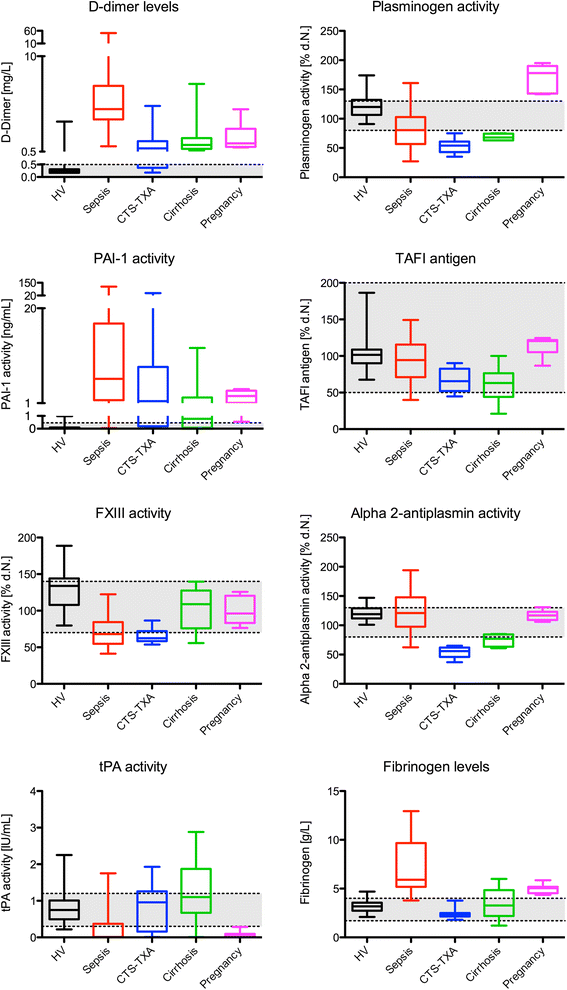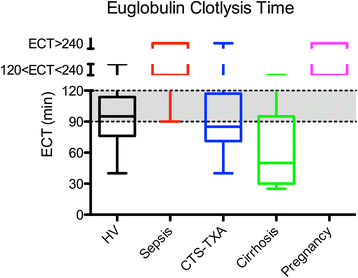Validation of a modified thromboelastometry approach to detect changes in fibrinolytic activity
- PMID: 26770073
- PMCID: PMC4712545
- DOI: 10.1186/s12959-016-0076-2
Validation of a modified thromboelastometry approach to detect changes in fibrinolytic activity
Abstract
Background: Thus far, validated whole blood assays used in in vitro fibrinolysis experiments using thromboelastometry (ROTEM) are lacking or have yet to be tested in humans. The objective was first, to establish a standardized modified ROTEM approach to detect both hypo- and hyperfibrinolysis. And second, to perform a technical and clinical validation of the assay.
Methods: Blood was used of healthy volunteers, patients with sepsis, patients after cardiothoracic surgery, pregnant women, and cirrhotic liver disease patients. A whole blood tissue factor (TF) activated ROTEM assay with and without the addition of recombinant tissue plasminogen activator (rTPA) was developed. Plasma fibrinolysis determinants were measured in all volunteers and patients.
Results: Thirty five pM TF and additions of 125 and 175 ng/ml rTPA resulted in full lysis within 60 min in healthy volunteers. Coefficients of variation were below 10 % without and below 20 % with rTPA addition. In sepsis the hypofibrinolytic ROTEM profiles with 175 ng/ml rTPA were in line with the plasma determinants (high PAI-1, high fibrinogen, low tPA activity, and high d-dimers). After cardiothoracic surgery, reduced fibrinogen and platelet levels accounted for the reduced maximum clot firmness. The hypofibrinolytic profile is attributed to tranexamic acid use and elevated PAI-1 levels. The lowest rTPA concentration in cirrhosis resulted in hyperfibrinolysis in only few of the patients. In pregnancy normal profiles were found.
Discussion: Our high rTPA concentration demonstrates hypofibrinolytic profiles adequately in sepsis and after cardiothoracic surgery. Our low rTPA concentration of 125 ng/ml seems too high for demonstrating hyperfibrinolysis in cirrhotic liver disease.
Conclusions: We were able to present a validated whole blood ROTEM approach to fibrinolysis testing using added rTPA, which can be of added value next to classical plasma based fibrinolysis assays.
Keywords: Blood coagulation tests; Fibrinolysis; Thrombelastography; Tissue plasminogen activator; Validation studies.
Figures






References
LinkOut - more resources
Full Text Sources
Other Literature Sources
Miscellaneous

